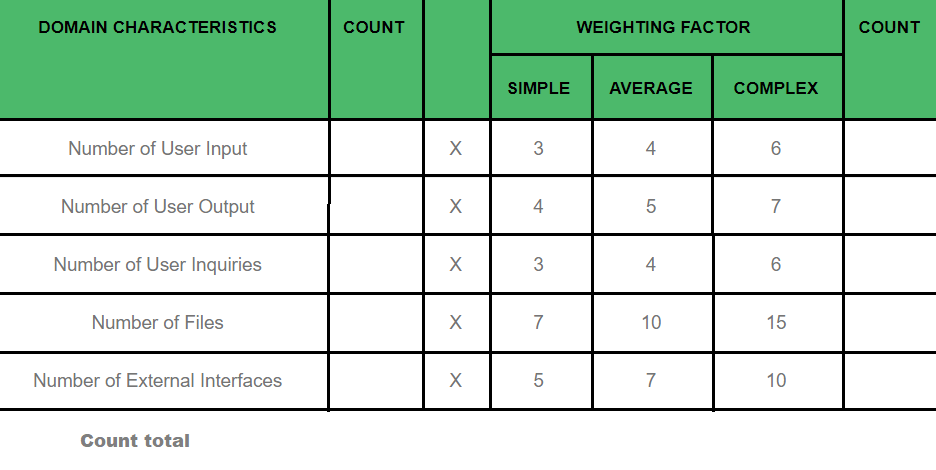Short Note on Function-Oriented Metrics
Last Updated :
29 Jun, 2020
Prerequisites – Functional Point Analysis, Calculation of Function Point
Function-Oriented Metrics is a method that is developed by Albrecht in 1979 for IBM (International Business Machine). He simply suggested a measure known as Function points that are derived using an empirical relationship that is based on countable measures of software’s information or requirements domain and assessments of the complexity of software.
Function-Oriented Metrics are also known as Function Point Model. This model generally focuses on the functionality of the software application being delivered. These methods are actually independent of the programming language that is being used in software applications and based on calculating the Function Point (FP). A function point is a unit of measurement that measures the business functionality provided by the business product.
To determine whether or not a particular entry is simple, easy, average, or complex, a criterion is needed and should be developed by the organization. With the help of observations or experiments, the different weighing factors should be determined as shown below in the table. With the help of these tables, the count table can be computed.

The software complexity can be computed by answering the following questions :
- Does the system need reliable backup and recovery?
- Are data communications required?
- Are there distribute processing functions?
- Is the performance of the system critical?
- Can the system be able to run in an existing, heavily, and largely utilized operational environment?
- Does the system require on-line data entry?
- Does the input transaction is required by the on-line data entry to be built over multiple screens or operations?
- Are the master files updated on-line?
- Are the inputs, outputs, files, or inquiries complex?
- Is the internal processing complex?
- Is the code which is designed to be reusable?
- Are conversion and installation included in the design?
- Is the system designed for multiple installations in various organizations whenever required?
- Is the application designed to facilitate or make the change and provide effective ease of use by the user?
Each of the above questions is answered using a scale that ranges from o to 5 (not important or applicable to absolutely essential).
This scale is shown below :

Calculating Function Point :

After calculating the function point, various other measures can be calculated as shown below :
Productivity = FP / person-month
Quality = Number of faults / FP
Cost = $ / FP
Documentation = Pages of documentation / FP
Some figures –
| Language |
Lines of Code per Function Point |
| ADA 83 |
71 |
| C |
128 |
| C++ |
49 |
| CLOS |
27 |
| COBOL 85 |
91 |
| Eiffel |
21 |
C++
Smalltalk |
21
21 |
| Visual Basic |
32 |
Small Project: <2000 Function Points
Medium Project: 2, 000 to 10, 000 Function Points
Large Project: > 10, 000 Function Points
Disadvantages of Function-Oriented Metrics :
- Function Oriented Metrics was only developed for business systems, therefore it is valid for only that domain.
- In this, some of the aspects are subjective and have not been validated.
- The function point does not have any physical meaning. It is just a number.
Like Article
Suggest improvement
Share your thoughts in the comments
Please Login to comment...